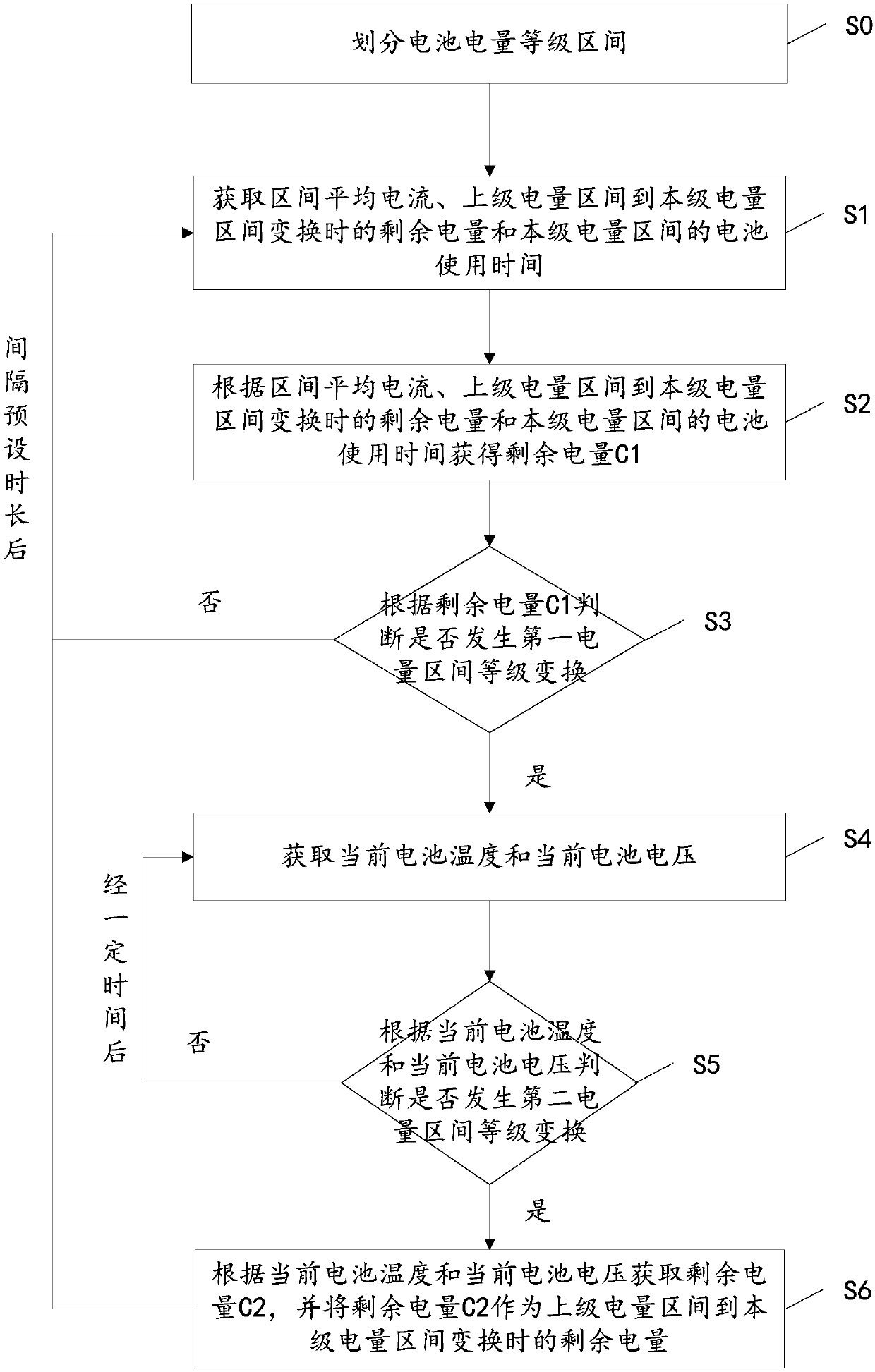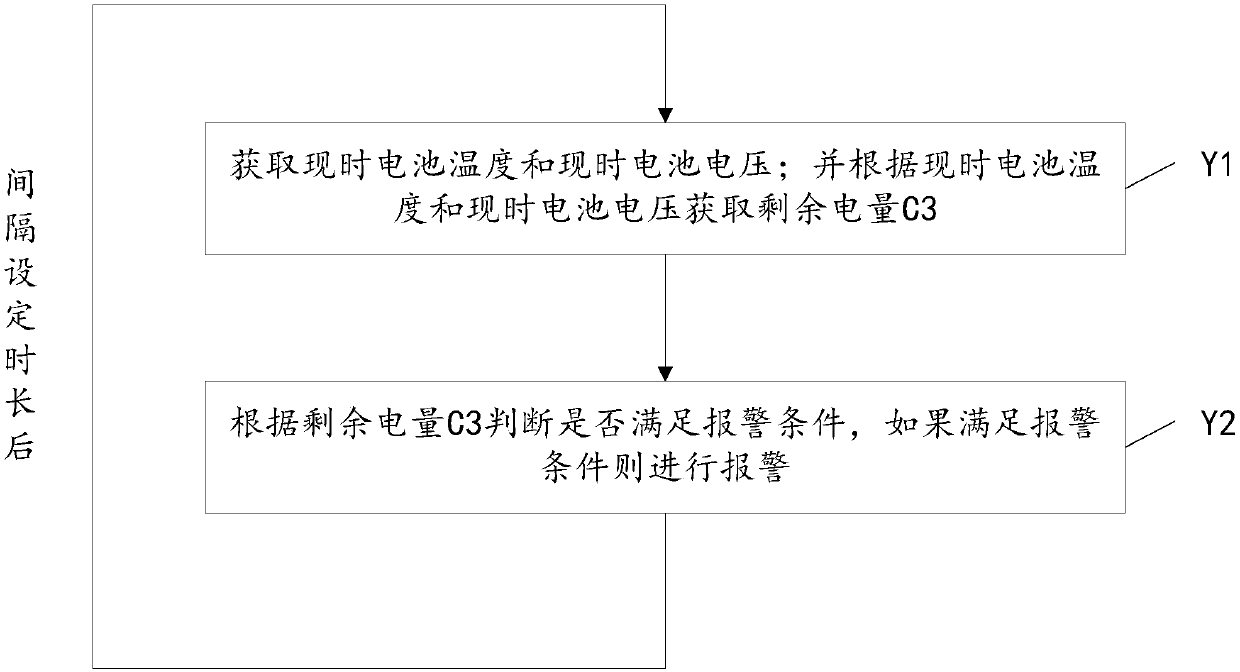Method for calculating residual capacity of metering instrument battery
A technology of remaining battery power and remaining power, which is applied in the field of instruments and can solve problems such as inability to balance energy consumption and accuracy
- Summary
- Abstract
- Description
- Claims
- Application Information
AI Technical Summary
Problems solved by technology
Method used
Image
Examples
Embodiment 1
[0077] The invention provides a method for calculating the remaining battery power of a measuring instrument, such as figure 1 shown, including the following steps:
[0078] Step S0: dividing battery power level intervals;
[0079] Step S1: Obtain the interval average current, the remaining power when the upper-level power interval is converted to the current-level power interval, and the battery usage time of the current-level power interval;
[0080] Step S2: Obtain the remaining power C1 according to the interval average current, the remaining power when the upper-level power range is converted to the current-level power range, and the battery usage time of the current-level power range;
[0081] Step S3: judging whether the first electric power interval level change occurs according to the remaining electric quantity C1; if the first electric power interval level change occurs, then enter step S4, and if the first electric power interval level change does not occur, then ...
Embodiment 2
[0124] The difference from Embodiment 1 is that the method for calculating the remaining battery capacity of the meter also includes a step of evaluating the remaining battery life, and the step of evaluating the remaining battery life includes: obtaining the remaining power C1 and the average current of the upper-level power range, and according to the remaining power C1 Calculate the remaining service life of the battery by calculating the average current of the upper-level power range. It can be known that the remaining service life of the battery can be obtained by dividing the remaining power C1 by the average current of the upper power range. The remaining service life of the battery can reflect the instrument life of the meter and serve as the basis for the maintenance and replacement of the meter.
Embodiment 3
[0126] The difference from Embodiment 1 is that the method for calculating the remaining battery capacity of the meter also includes the step of evaluating the remaining service life of the battery, and the step of evaluating the remaining service life of the battery includes: obtaining the remaining power C2 and the average current of the upper-level power range, and according to the remaining power C2 and Calculate the average current of the upper power range to get the remaining service life of the battery. It can be known that the remaining service life of the battery can be obtained by dividing the remaining power C2 by the average current in the upper power range. The remaining service life of the battery can reflect the instrument life of the meter and serve as the basis for the maintenance and replacement of the meter.
PUM
 Login to View More
Login to View More Abstract
Description
Claims
Application Information
 Login to View More
Login to View More - R&D
- Intellectual Property
- Life Sciences
- Materials
- Tech Scout
- Unparalleled Data Quality
- Higher Quality Content
- 60% Fewer Hallucinations
Browse by: Latest US Patents, China's latest patents, Technical Efficacy Thesaurus, Application Domain, Technology Topic, Popular Technical Reports.
© 2025 PatSnap. All rights reserved.Legal|Privacy policy|Modern Slavery Act Transparency Statement|Sitemap|About US| Contact US: help@patsnap.com



